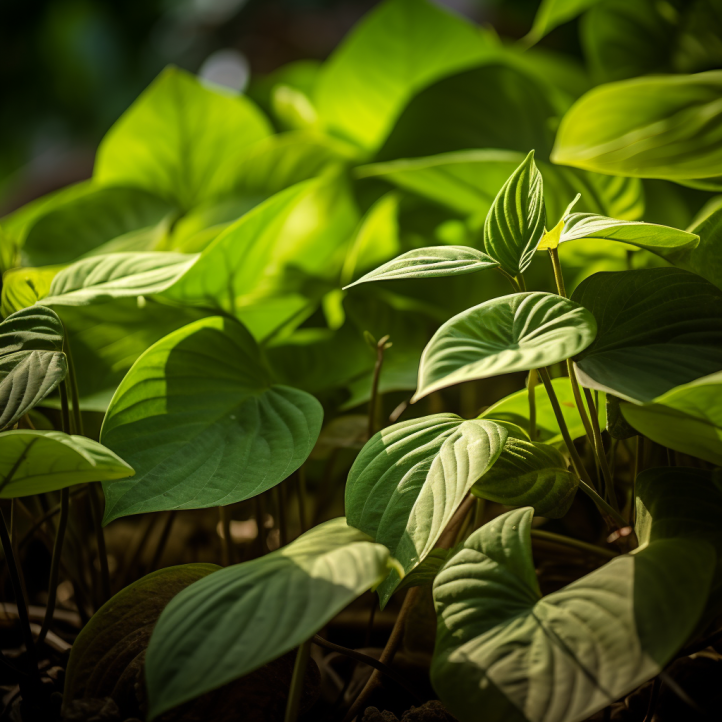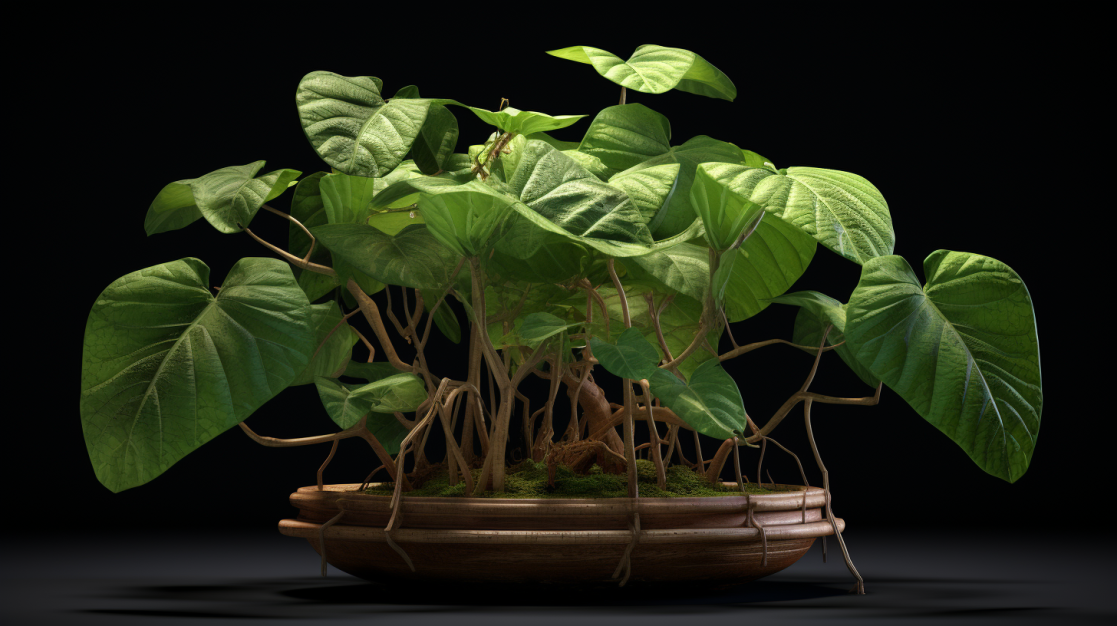Kava is an ancient ceremonial drink from the Pacific Islands that’s gaining popularity worldwide for its ability to reduce anxiety, improve sleep, and protect brain health.
Key facts about kava:
- Kava comes from the root of the Piper methysticum plant and has been consumed ceremonially and socially in Pacific Island cultures for thousands of years.
- Kava contains compounds called kavalactones that have been shown to have anti-anxiety, sedative, analgesic, and neuroprotective effects.
- Clinical studies show kava extracts can reduce anxiety similarly to prescription medications, but with fewer side effects.
- Traditionally-prepared water extracts appear safe, but some kava supplements have been linked to rare cases of liver toxicity.
- Kava doesn’t impair cognition when used in moderation but can cause drowsiness, especially when combined with alcohol or medications.
Source: Nutrients
Kava’s Long History as a Social Lubricant in the Pacific
Before Starbucks and happy hours, kava was the original social lubricant in many Pacific Island communities.
Known as ‘awa in Hawaii, yaqona in Fiji, and sakau in Pohnpei, kava has a central role in cultural rituals and daily life across Melanesia, Micronesia, and Polynesia.
The consumption of kava beverages dates back over 3000 years and was historically reserved for chiefs, priests, and esteemed guests.
In traditional kava ceremonies, the root of the kava plant is chewed, spit out, and mashed to release the biologically active compounds.
The masticated pulp is then mixed with water and strained through hibiscus fibers to produce a murky, earthy, somewhat bitter drink.
In places like Vanuatu, Fiji, and Tonga, drinking kava is woven into the social fabric.
It’s consumed ceremonially during weddings, funerals, graduations and political events, and is also a routine part of daily village life.
In Hawaii, informal “instant” kava made from powdered extracts is popular among locals and tourists alike.
The kavalactones in kava have a relaxing, euphoriant effect that promote sociability and peaceful feelings without impairing cognition like alcohol.
However, excessive kava consumption can cause drowsiness and “kava stupor.”
For thousands of years, Pacific Islanders have skilfully used this plant for ritual, recreational and medicinal purposes without apparent harm.
Modern kava bars are now bringing the social custom of kava drinking to urban areas worldwide.
Patrons can enjoy kava drinks in a chill café-like setting as an alternative to alcohol.
With stress and anxiety at all-time highs, interest in these traditional island elixirs is booming.
Kava’s Active Compounds: Pharmacology & Mechanism of Action
So how exactly does kava work in the brain and body?
Kava’s pharmacologic effects come mainly from 18 compounds called kavalactones found in the rootstock.
The six major kavalactones are methysticin, dihydromethysticin, kavain, dihydrokavain, yangonin, and desmethoxyyangonin.
Minor kavalactones and other constituents like flavokavains and alkaloids may also play a role.
Kavalactones produce effects via several mechanisms in the central and peripheral nervous systems:
- Increasing GABA receptor binding – GABA is the brain’s major inhibitory neurotransmitter. More GABA activity reduces neuronal excitability, inducing muscle relaxation and anxiety relief.
- Blocking voltage-gated sodium channels – This reduces the flow of sodium ions and electrical signaling between neurons, which dampens excitability.
- Modulating serotonin, dopamine and norepinephrine – Kavalactones interact with receptors for these three key neurotransmitters involved in mood, arousal, cognition and pain.
- Reducing inflammation – Substances that decrease inflammatory cytokines may improve mood and cognition in anxiety, depression and neurodegenerative disease.
The individual kavalactones have somewhat different pharmacokinetic properties and mechanisms of action that all contribute to kava’s effects.

Kavain and methysticin pass the blood-brain barrier most readily while yangonin has a greater affinity for CB1 receptors.
The ensemble effect of kavalactones together is likely responsible for kava’s versatile neuropharmacology.
At moderate doses, kava’s most pronounced effect is reducing anxiety levels.
Multiple clinical trials show kava extracts work as well as pharmaceutical drugs like oxazepam and benzodiazepines for treating generalized anxiety disorder, social phobia, and anxiety linked to menopause or surgical procedures.
Unlike benzodiazepines, kava doesn’t appear to impair cognition or coordination when used acutely at recommended dosages.
However, kava certainly has mild sedative properties that become more evident with higher doses.
Combining kava with other sedatives like alcohol is not advisable.
Kava’s analgesia-enhancing, anticonvulsant, and muscle relaxing properties round out its pharmacological profile.
Interestingly, Pacific Islanders who consume kava frequently show reduced rates of cancer that may be attributed to kava.
The compound flavokavain B has exhibited anticancer properties in lab studies.
Safety of Traditional vs. Supplemental Kava
Despite its long legacy of traditional use, kava’s safety has become controversial since the 1990s.
There have been several dozen case reports of liver problems linked to kava use, including hepatitis, cirrhosis, and liver failure prompting death or transplant in rare cases.
In response, kava supplements were banned in Europe for over a decade and sales plummeted worldwide.
However, traditional water extracts from the Pacific don’t appear to carry the same risks as concentrated pill and tincture forms of kava sold as supplements outside the islands.
Analyzing the patterns of kava’s adverse effects provides some clues into what might be going wrong with certain modern preparations:
- Cases have involved almost exclusively kava supplements, not traditional usage. No epidemics of liver disease are occurring in the heavy kava drinking populations of the Pacific Islands.
- Women account for 80-90% of reported cases, suggesting sex-based susceptibility to liver toxicity.
- Co-medication with prescription drugs known to stress the liver was present in the majority of cases.
- Products used were often ethanol or acetone extracts instead of the water extracts used traditionally. These extraction methods change the ratio of kavalactones.
- Non-root peelings were sometimes used, which are higher in alkaloids.
- Leaves, which contain a toxic alkaloid pipermethystine, may have been mixed in. Leaves are never used in traditional kava preparations.
- Cases have mostly been associated with “two-day” kava cultivars high in flavokavains linked to liver damage in animal studies.
Based on these patterns, several factors related to supplement manufacturing and quality control could be compromising consumer safety.
There’s also likely a genetic component influencing susceptibility to liver injury.
To reduce risks, consumers should be cautious about using strong kava extract supplements, especially with medications that affect the liver.
Alcohol and acetaminophen are best avoided. Women may be wise to use lower doses than men.
The highest-quality kava is made the traditional way: a water extract of the dried or fresh roots of safe noble cultivars like Borogu or Isa.
Kava from reputable supplement brands closely adhering to these protocols is less likely to cause liver issues.
Optimizing Kava Health Benefits with Modern Science
After falling out of favor due to toxicity concerns, kava is now experiencing a resurgence in popularity and research thanks to new evidence of its safety profile and therapeutic benefits when used mindfully.
Here are some ways that combining traditional wisdom with modern science could help maximize kava’s potential:
- Developing standardized laboratory assays to quantify and compare the potency of various kava products objectively. This can help consumers select quality preparations.
- Using genetics to identity cultivars consistently high in anti-anxiety kavalactones like kavain and low in the hepatotoxic flavokavains.
- Creating clinical practice guidelines for kava use at appropriate dosages, with cautions about drug interactions and at-risk groups.
- Engineering novel synthetic or semi-synthetic analogues of kavalactones with improved brain bioavailability and pharmacodynamics.
- Exploring combination botanical therapies using kava along with complementary herbs like lemon balm or magnesium.
- Investigating kava’s effects on cognition, stress resilience, pain, addiction, and neurodegenerative and psychiatric conditions beyond standard anxiety disorders.
- Assessing neuroimaging and biomarker outcomes from kava administration to better understand its mechanisms of action on human brain function.
A renaissance of rigorous research on this time-tested plant is illuminating new possibilities for kava in brain health promotion.
With judicious use and further study, kava may help fill gaps in our currently inadequate pharmacopeia of anxiolytics and neuroprotective agents.
The future is bright for this Pacific gem.
References
- Study: Kava as a clinical nutrient: promises & challenges
- Authors: Tengfei Bian et al. (2020)







